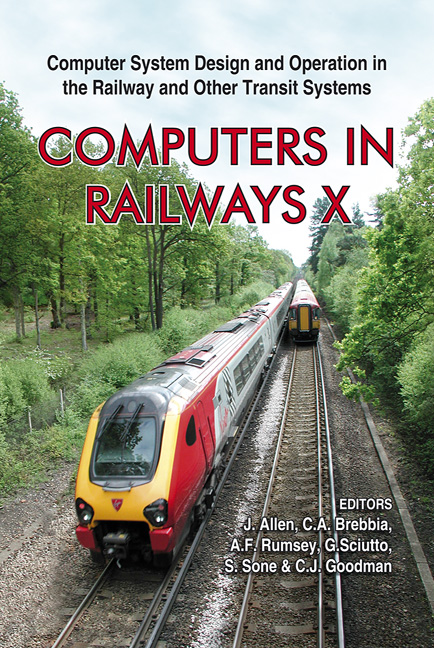Optimal Train Control At A Junction In The Main Line Rail Network Using A New Object-oriented Signalling System Model
Price
Free (open access)
Transaction
Volume
88
Pages
10
Published
2006
Size
1,830 kb
Paper DOI
10.2495/CR060481
Copyright
WIT Press
Author(s)
R. Takagi, P. F. Weston, C. J. Goodman, C. Bouch, J. Armstrong, J. Preston & S. Sone
Abstract
On a main line railway network with many junctions, the delay of a train is likely to cause delays to many other trains, especially because of conflicts at junctions. Optimising one junction, however, may have an adverse effect on other parts of the rail network because of the mixed-traffic situation of most main line railways. To approach the complicated problem of optimal re-scheduling in response to the delay of a train, an efficient algorithm must be sought. The authors have taken a junction as an example, and have performed numerical optimisation on a case when the services through this junction are disrupted. The objective criterion is the weighted sum of train times. The optimisation program uses the Object-Oriented Multi-Train Simulator (OOMTS) developed by Birmingham University, as an embedded simulator. In the optimisation routine, a Genetic Algorithm (GA) was used to optimise the order of route setting. In this paper, the authors give details of a model junction, and a brief explanation of the OOMTS. The authors then explain how a GA can be applied to solve this problem, especially the chromosomal expression of the problem. The results of numerical optimisations for different weighting parameters are shown based on which the authors discuss the feasibility of the proposed method. Keywords: object-oriented, multi-train simulator, railway signalling, junction, train pathing, optimisation, Genetic Algorithm.
Keywords
object-oriented, multi-train simulator, railway signalling, junction, train pathing, optimisation, Genetic Algorithm.





